Google Pixel 8 review: getting closer to the ultimate Pixel
Google's Pixel 8 isn't a huge leap over the Pixel 7, but there's still a lot to like – as detailed in our review
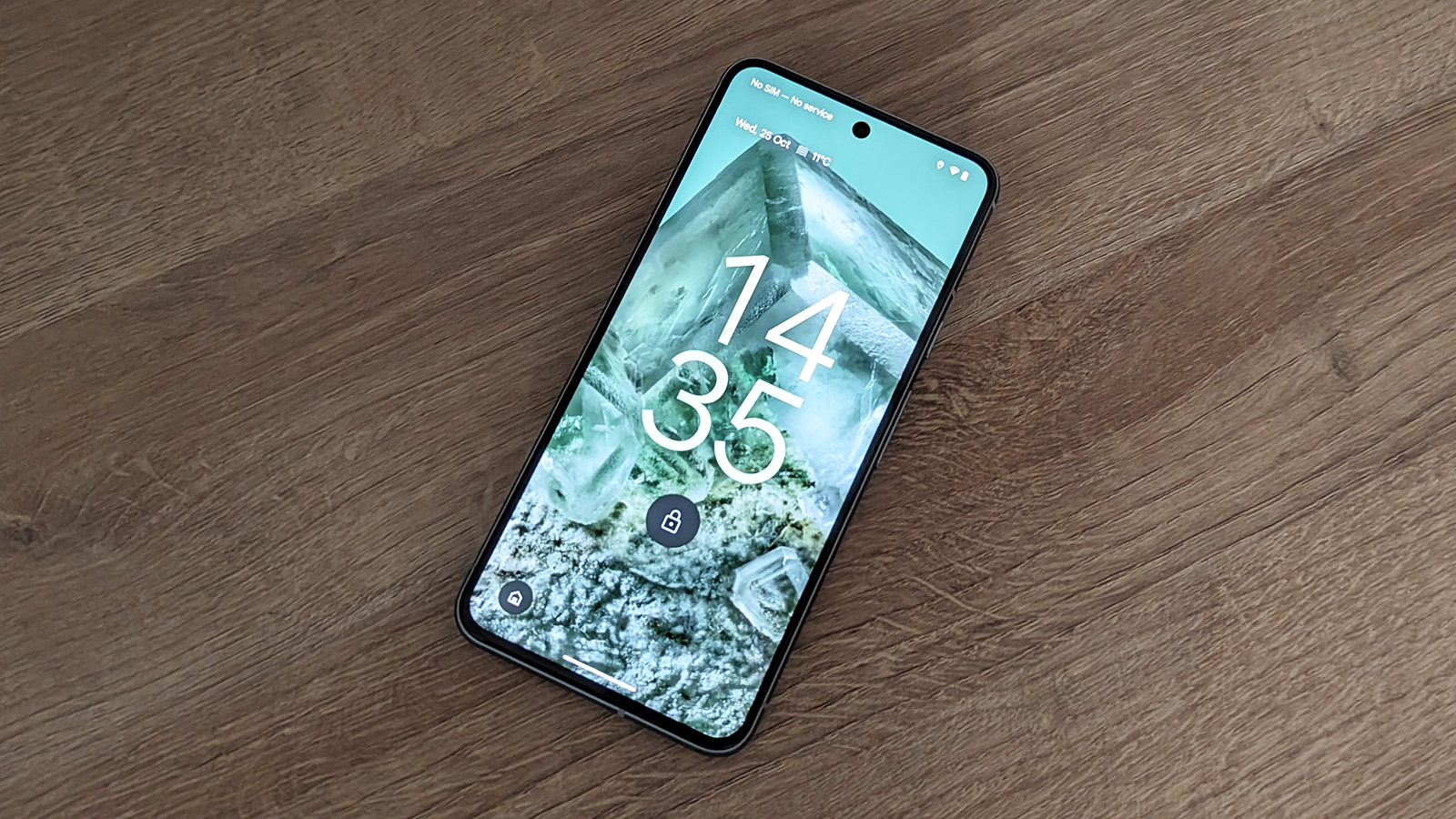
Google's new Pixel for 2023 has more camera tricks than ever before, and is seriously appealing for Pixel and Android fans – though there are some flaws as well. It's not quite as capable as the bigger Pixel 8 Pro, but it's better value for money if you don't want to zoom cameras and extra scale.
-
+
Excels in photo and video capture, as usual
-
+
A compact, stylish and well-built phone
-
+
Software updates for seven years
-
-
The Pixel 8 Pro has better cameras
-
-
Some of the new AI features are a bit odd
-
-
Battery life still isn't all that brilliant
Why you can trust T3

Together with the Google Pixel 8 Pro, the Pixel 8 represents Google's big shot at producing one of the best phones of 2023 – it's the smaller, cheaper of the two handsets, and there are some important differences (as well as plenty of similarities) that we need to discuss.
We'll get into that and much more in this comprehensive Google Pixel 8 review. But having spent several days with the device, using it all day as my regular phone, I'm in a great position to tell you how it compares to the other smaller-scale flagships out there.
They include the iPhone 15 Pro from Apple, the Samsung Galaxy S23, and all the other handsets on our best Android phones list. Is the Pixel 8 enough of an improvement over last year's Google Pixel 7? Read on to find out everything you need to know about it.
Google Pixel 8: price & availability
The Google Pixel 8 is available to buy now! You can pick it up directly from Google for £699 / $699 for the model with 128GB of storage, and £759 / $759 for the model with 256GB of storage.
That's quite the price bump over the £599 / $599 (128GB) or £699 / $699 (256GB) you would've paid at launch for the Pixel 7 though. Here's how the Pixel 8 compares to the Pixel 7 for your info.
If better deals are currently available anywhere on the web, you'll see them highlighted in the widgets embedded on this page – in the UK, you can pick up the phone from retailers including Amazon and Argos.
Google Pixel 8 review: what's new?
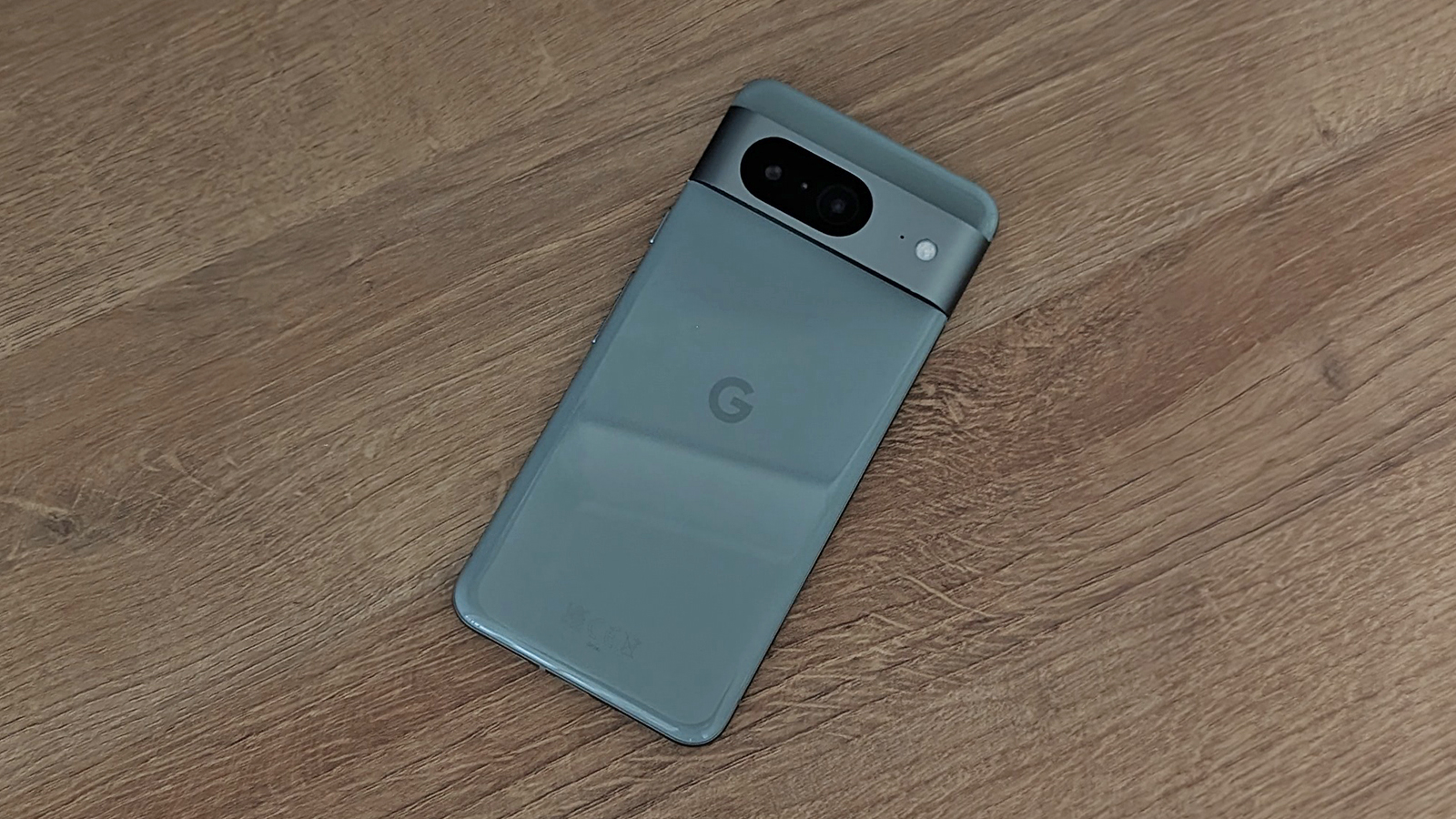
- Headlines: Faster Tensor G3 processor, brighter screen, more years of software support
Compared with the Pixel 7 that Google launched in 2022, the Pixel 8 upgrades the Tensor G2 processor to the Tensor G3: Google hasn't gone into details in terms of performance, but says there are improvements across the board, especially when it comes to the complexity of artificial intelligence tasks that can be carried out locally.
Design-wise, the Pixel 8 is a little shorter (top to bottom), narrower (side to side), and thicker (front to back), than its immediate predecessor. It's also a touch lighter. The screen size has shrunk from 6.3- to 6.2-inches, but the maximum refresh rate is up to 120Hz from 90Hz, and peak brightness is up to 2,000 nits from 1,400 nits.
Google is also supporting its Pixel phones for a longer period of time with software updates, starting with the Pixel 8 and Pixel 8 Pro. You're guaranteed to get Android updates and security patches, as well as the regular Pixel feature drops, for seven years – that will take you all the way up to 2030.
The Pixel 8 also has "upgraded" (in Google's words) main and ultrawide cameras on the back, though the megapixel ratings stay at 50MP and 12MP respectively. The battery has a slightly larger capacity, and wired charging speed has been upgraded to 27W from 20W – though wireless charging speeds are down to 18W from 20W, strangely enough. Support for Wi-Fi 7 has been added too.
Google Pixel 8 review: design & display
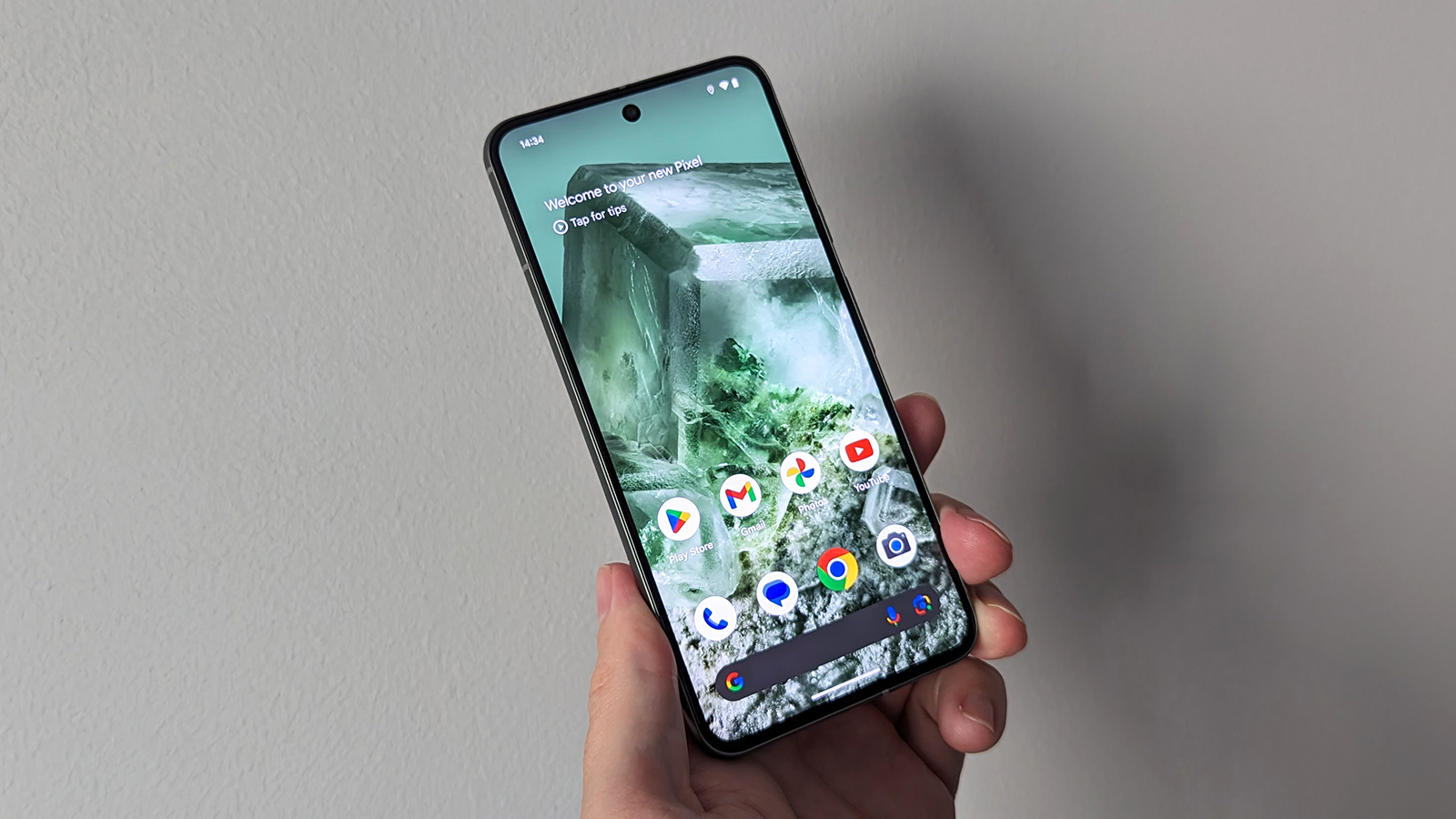
- Display: 6.2-inch 120Hz OLED, 1080 x 2400 pixel resolution, 2,000 nits peak brightness
- Colours: Hazel, Obsidian, Rose
It's fair to say the Google Pixel aesthetic is something of an acquired taste, but it's one that I like. As usual, the rear cameras are housed in a raised metal bar, and I like the distinctive look that it gives these phones – you can definitely tell that the Pixel 8 is a Pixel, helped by the subtle Google 'G' that's printed on the back of the handset.
Colour-wise, you can pick from Hazel (a sort of metallic grey), Obsidian (black), and Rose (light pink). We had the Hazel model to review, and while it's rather dull, you could call it a classic – as it was the older-gen Pixel 7 Pro's unique colourway. Some more colour options would've been nice though, and perhaps that's something Google can look at as a mid-cycle upgrade.
The Pixel 8 is a little rounder than the Pixel 7, which I like. It's also one of the best smaller phones on the market right now in terms of its 6.2-inch display. That's really a matter of personal preference – whether you'd rather have a more compact size than a larger screen. By now you probably know what you like best, and what you're used to using day to day.

I certainly can't complain about the feel and the finish of the Google Pixel 8: it feels like you're holding an expensive flagship smartphone in your hands. As is the norm now, the phone has an IP68 rating for protection against water and dust, which means it should survive submerged in water for up to 30 minutes and up to a depth of 1.5 metres.
The display holds up well in general use, though it's not quite at the level of the very best Samsung or Apple devices. Ramp up the brightness and everything is clear even in daylight, while it's also a great phone for watching video clips and browsing through photos. It's good to see the maximum refresh rate upped to 120Hz, though you can tell the phone to stick to 60Hz if you'd rather save a bit of battery life.
From playing games to browsing the web, everything is crisp and sharp, and there are plenty of resolution here – the screen has a 1080 x 2400 pixels, which is more than you'd typically get on cheaper phones. There is the option of an always-on display too, so you can keep the clock and other widgets on screen while the phone is locked, as long as you don't mind a small hit on battery life.
Google Pixel 8 review: performance & battery
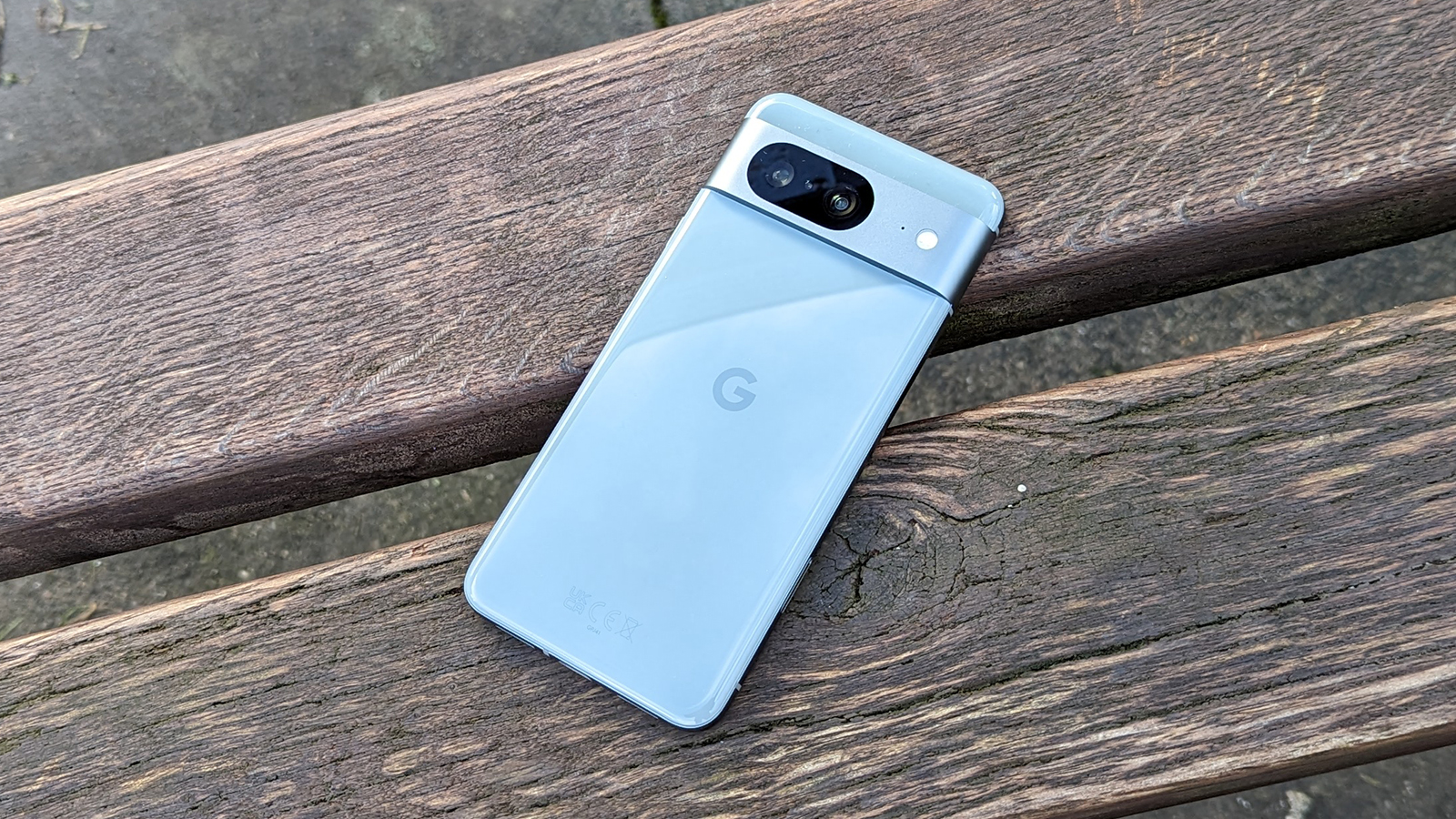
- Processor: Google Tensor G3, 8GB RAM
- Battery: 4575mAh capacity
- Charging: 27W wired / 18W wireless
In terms of benchmarks, the Tensor G3 processor fitted inside the Pixel 8 can't compete with the top-tier chipsets fitted inside the best handsets from Apple and Qualcomm – but there is a question as to how much power and performance the average user actually needs. For a lot of people, the Pixel 8 is going to be more than fast enough, even if it doesn't hit the heights of some other processors
I didn't notice any slowdowns or stuttering while jumping between apps or playing games, though that's to be expected on a brand new phone. The Pixel 8 coped admirably with everything I could throw at it, though it's worth bearing in mind that we did notice some minor issues when testing the Google Pixel 8 Pro – with the same Tensor G3 processor, plus an extra 4GB of RAM inside.
Where the Google Tensor G3 is meant to excel is in AI, and as with previous Pixel devices, there's a ton of smarts here. Exclusive Pixel apps like Recorder (which transcribes voice memos as you talk) and the Now Playing widget (that automatically recognises songs playing around you) all add up to give you good reasons to choose a Pixel over, say, a Samsung or a OnePlus phone. Then you have the benefit of being at the front of the queue for Android updates, which has long been a Pixel perk.
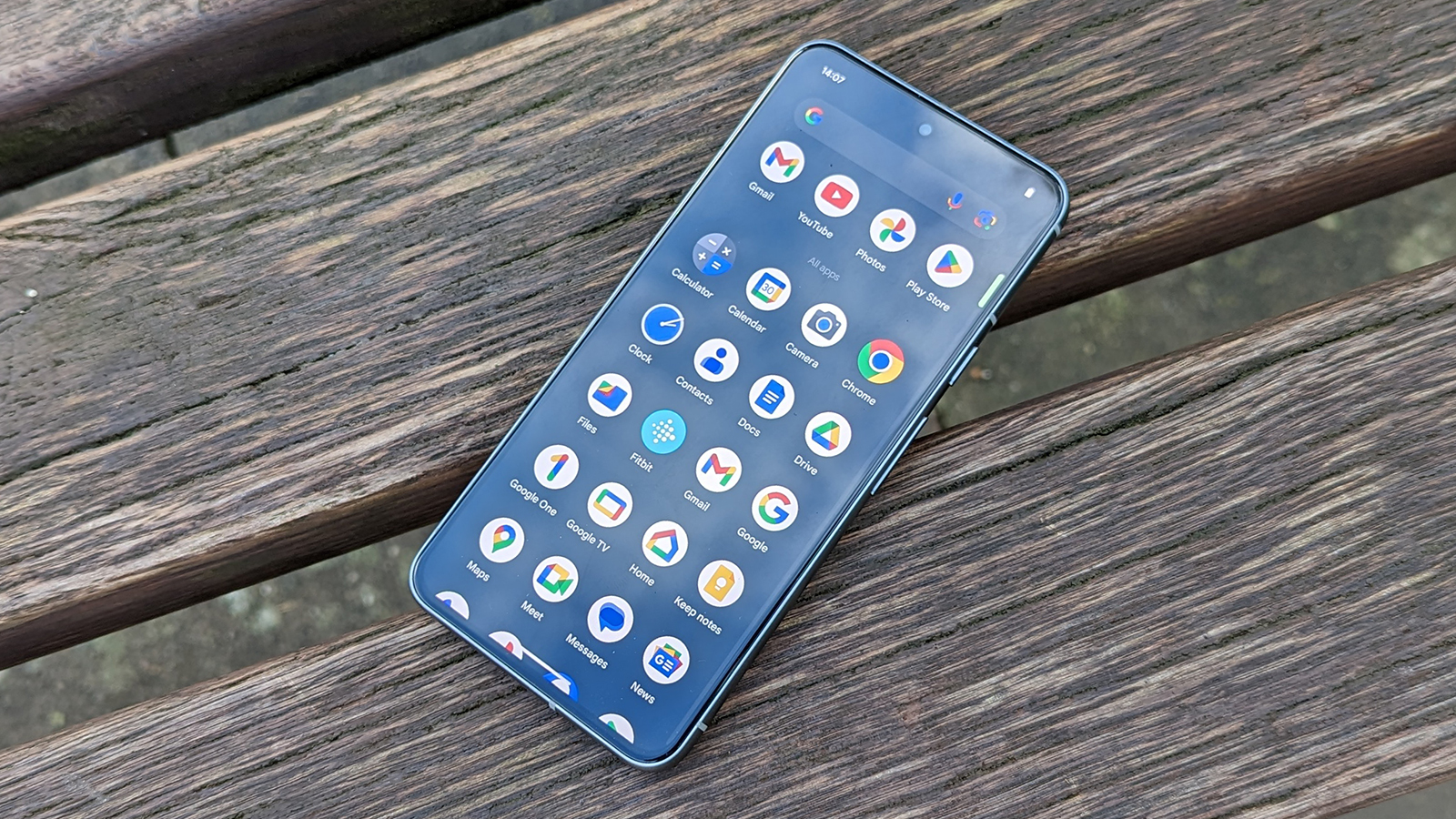
It's encouraging to see Google promising seven years of software updates for the Pixel 8 and the Pixel 8 Pro: it gives users some extra peace of mind, and means you don't have to worry about replacing your phone in a couple of years (unless you want to). And, as you would expect, Android continues to work seamlessly with all of Google's other apps, services, and hardware devices (including the best Chromebooks).
Battery life has long been so-so on the Pixel phones, and the Pixel 8 is not really different in this regard (despite an increase in battery capacity generation on generation). Most of the time I was getting to the end of the day with a quarter or a third of the battery life left – but with more intensive use (gaming, for example, or navigation) would need a little recharge before the end of the day. When doing nothing but watching videos at maximum brightness, I was getting a good 10-11 hours between charges though.
The 27W wired charging speeds mean a full recharge takes about an hour and a half, though oddly the wireless charging speeds have dropped to 18W from 20W on the Pixel 7 – though in both cases you need the official Pixel stand for that, otherwise you're down to 12W on wireless charging. This is definitely an area where Google can do better, so here's hoping for the Pixel 9.
Google Pixel 8 review: cameras
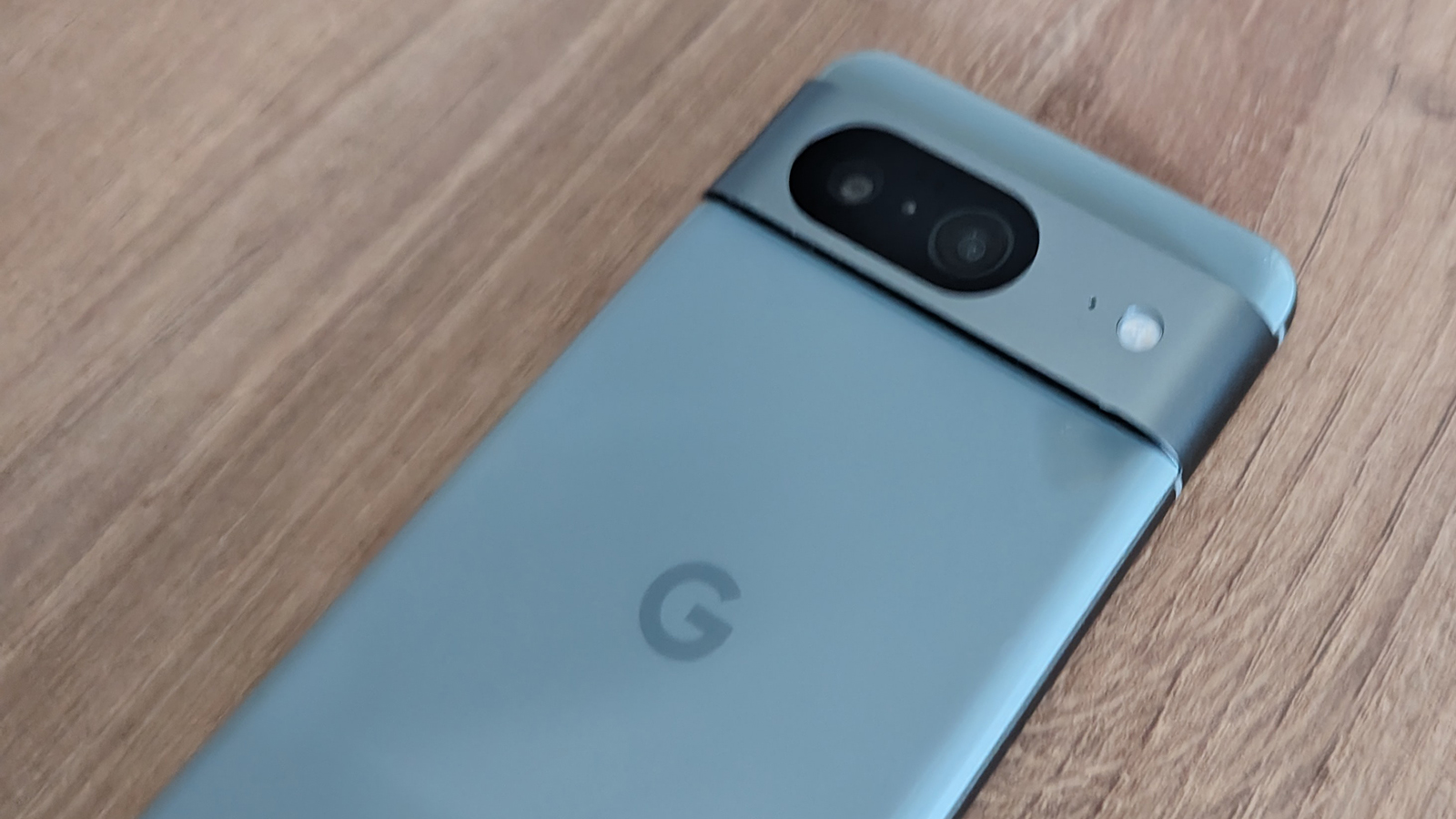
- Rear camera: 50MP f/1.68 + 12MP ultrawide f/2.2
- Selfie camera: 10.5MP f/2.2
While the megapixel rating of the main camera on the Pixel 8 is the same as it was on the Pixel 7, the aperture is now wider – which means that more light gets into the lens, so you should get better photos. The 12MP ultrawide camera gets a minor upgrade compared with the one on the preceding phone too, with autofocus capabilities that unlock a macro mode when you're right up close to the subject of your pictures.
The Google Pixel phones have long excelled in terms of how they capture photos and videos – thanks in part to the clever processing that Google applies during and after the capture process – and that continues with the Pixel 8. Photos and videos are sharp, detailed, and well-balanced in terms of their colour, and most of the time you pull this phone out to take a picture, you're going to end up with great results.
Night Sight continues to impress, taking a few moments to capture several exposures before combining them together: it transforms low-light shots quite remarkably, although there's a case to be made that these super-enhanced images aren't reflective of what you could actually see with your eyes at the time. This is where we are with smartphone photography now though, and the Pixel 8 comes with more AI-enhanced processing options through Google Photos too.
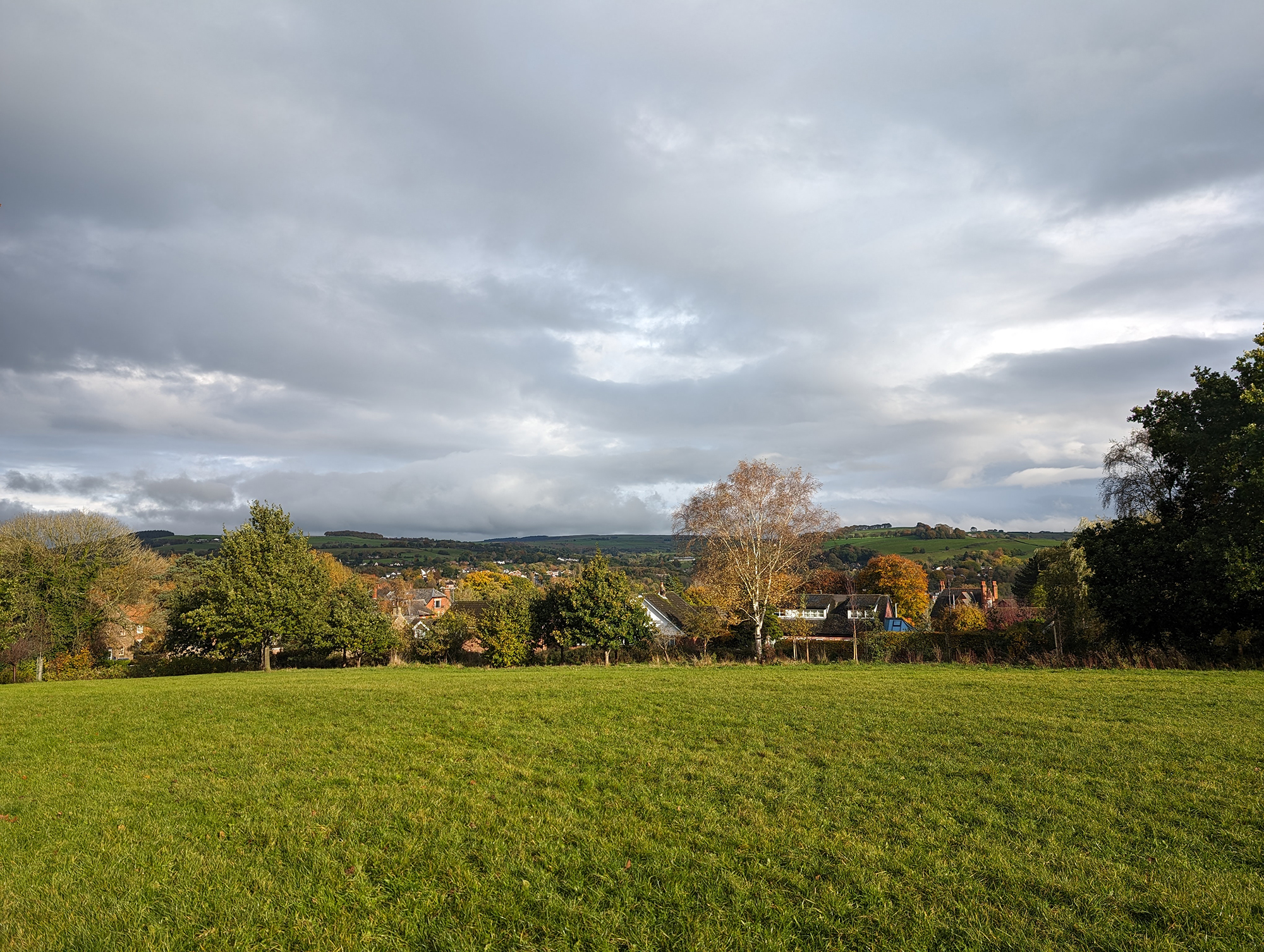
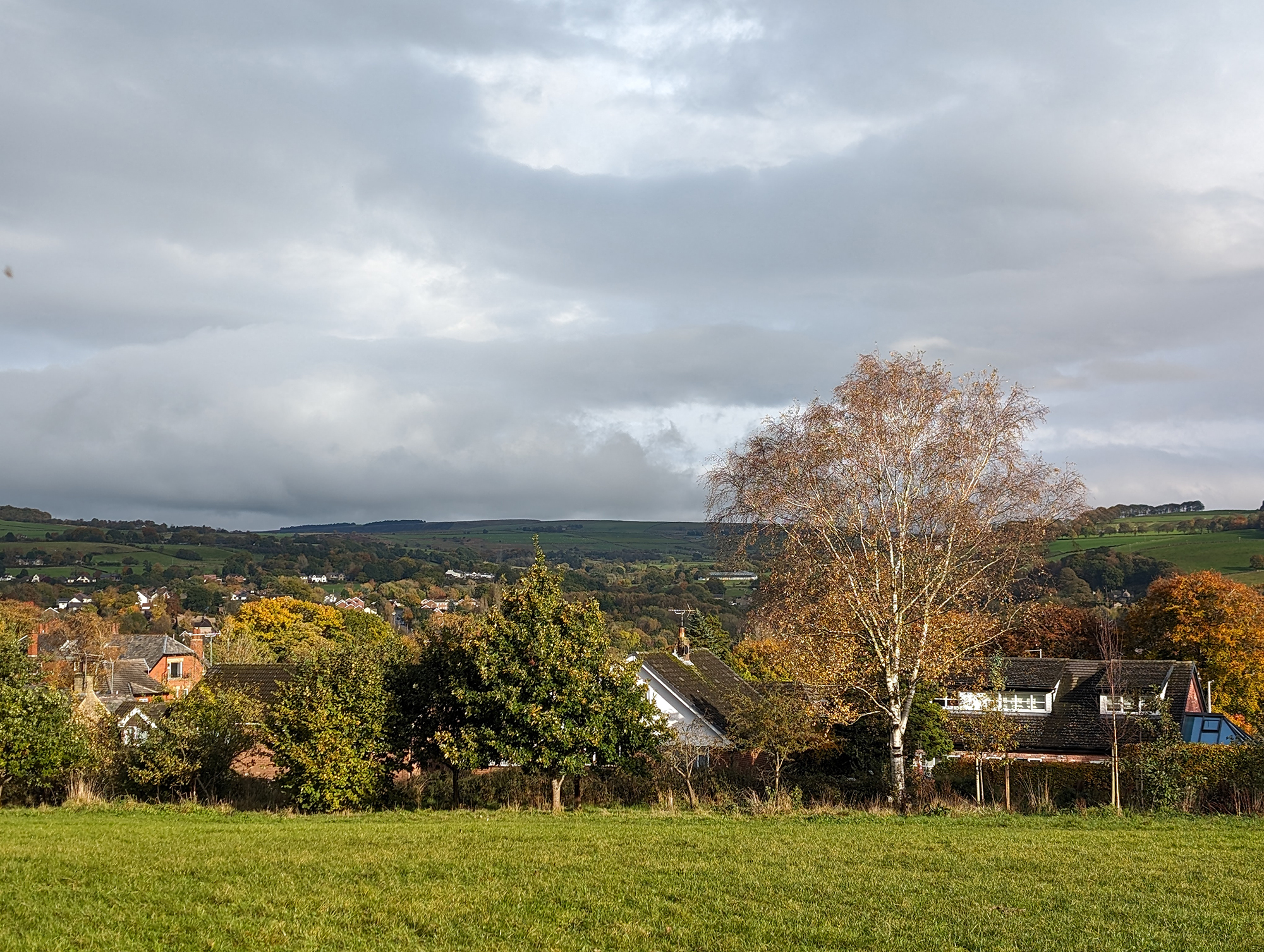



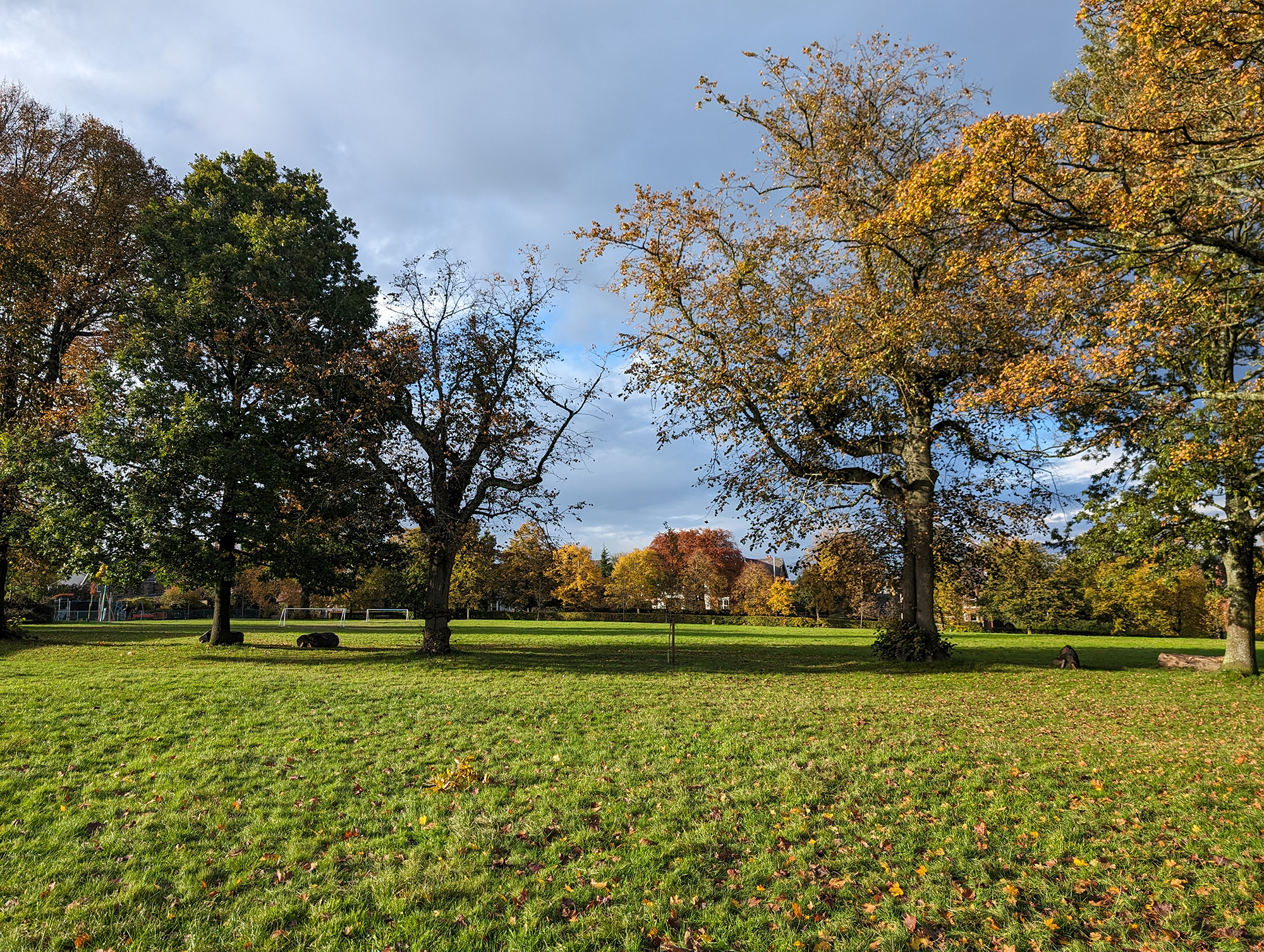
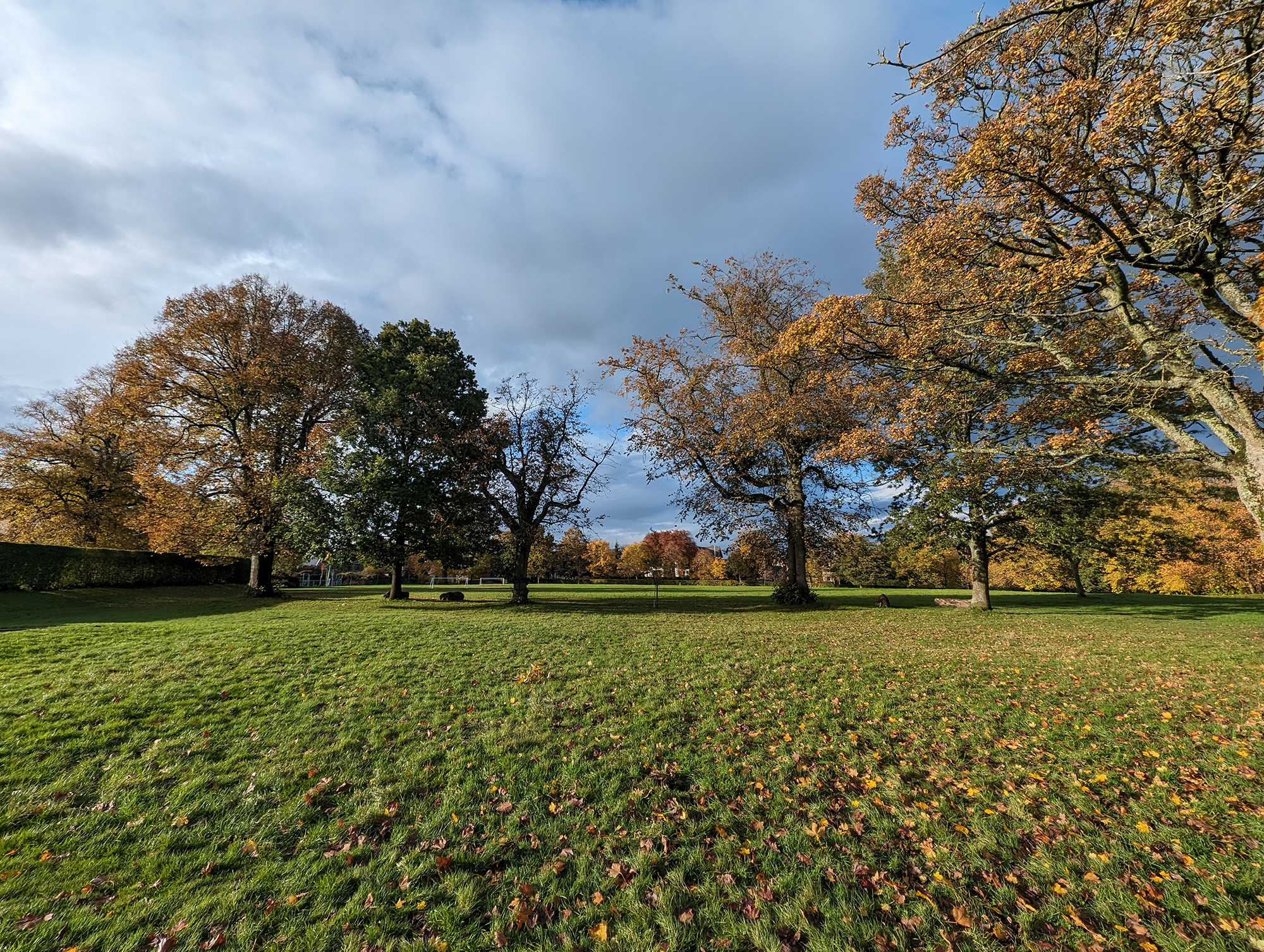
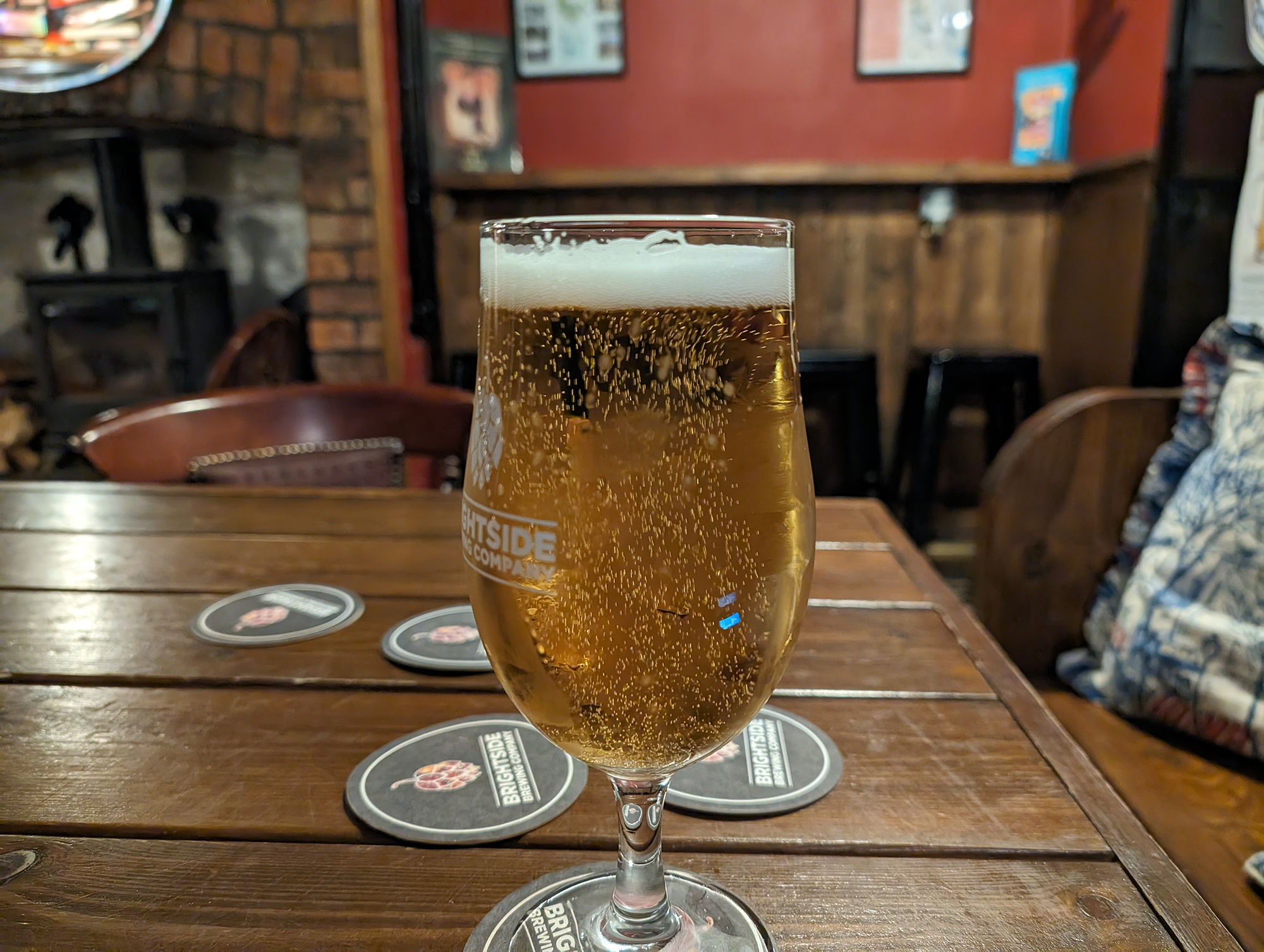
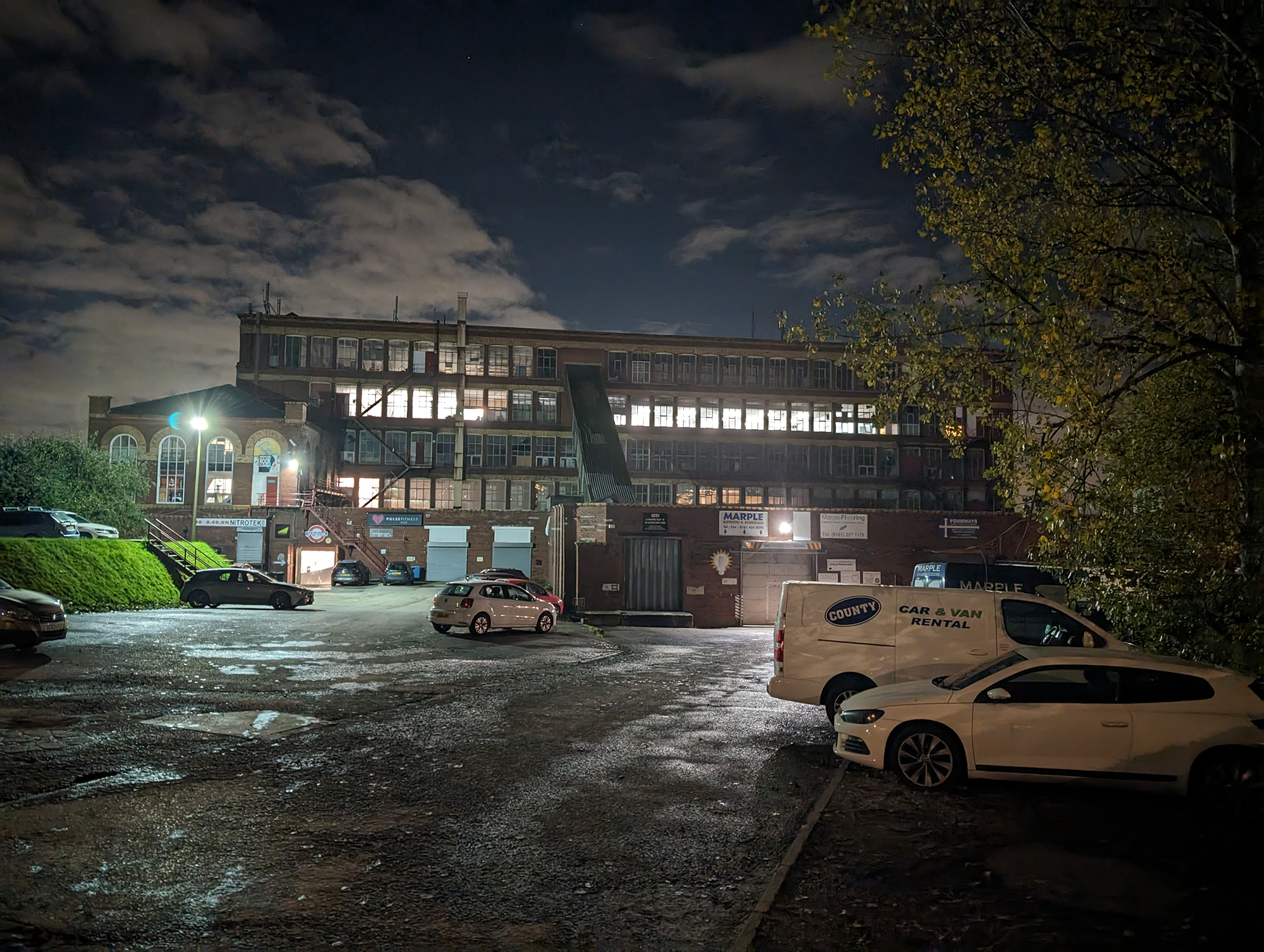
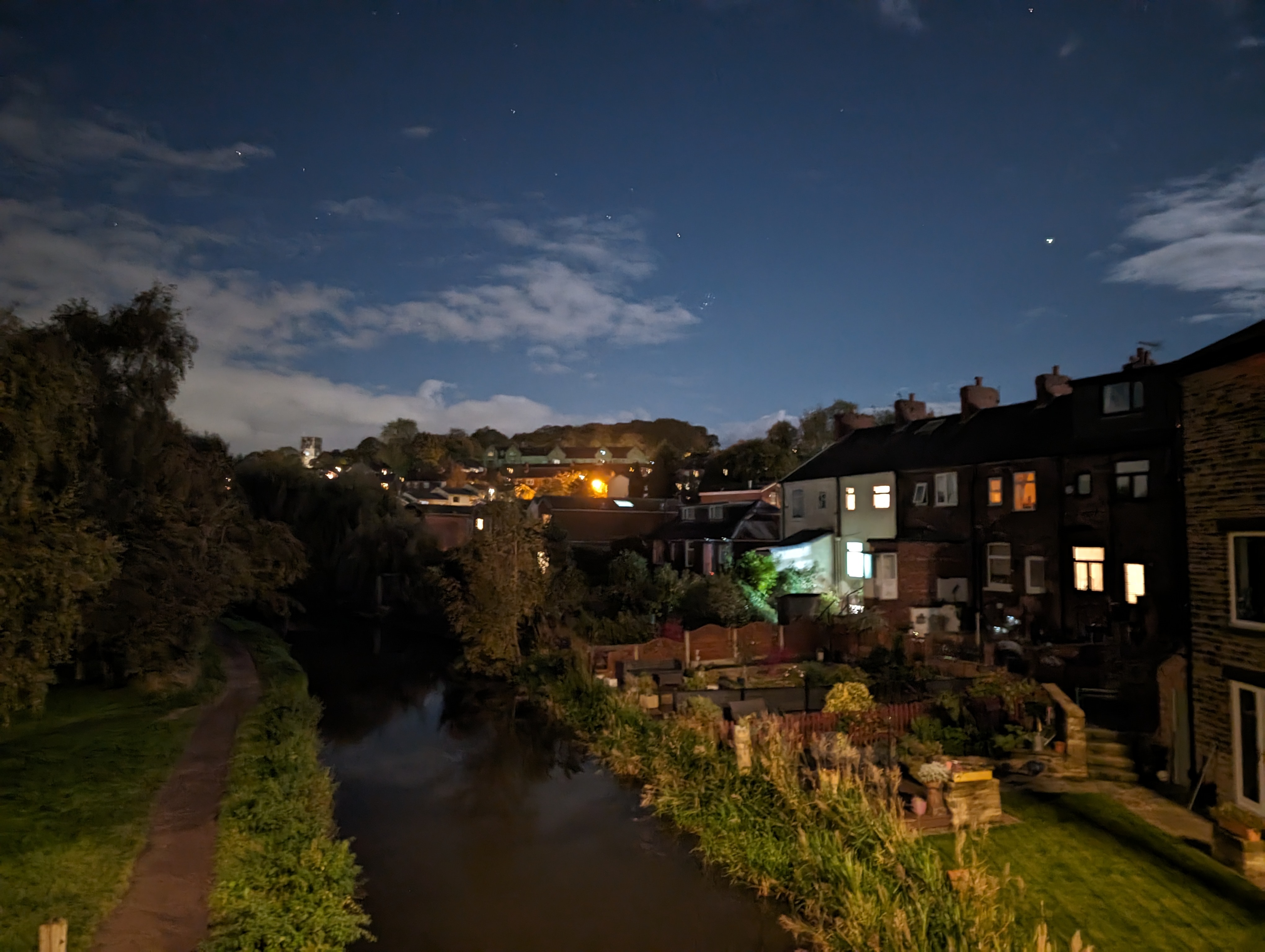
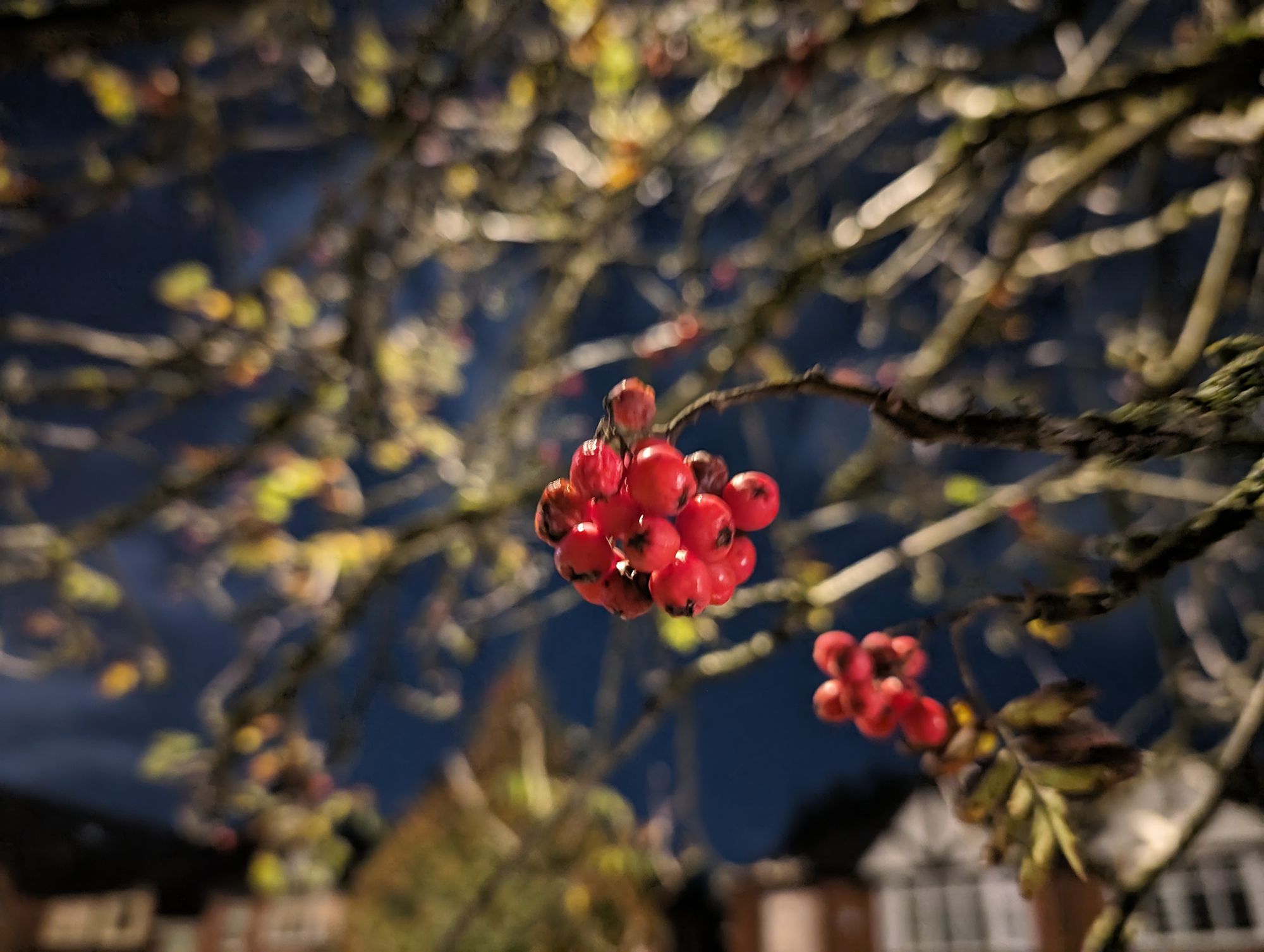
There's the Best Take feature, for example, which can look at several similar photos of the same group of people, then create a composite where the best face for each person (eyes open, wide smile) is used. For me, that's a step too far in computational photography, putting together a scene that never actually existed, but it's there if you need it.
On the video side, there's Audio Magic Eraser, which can cut out background noise (like wind or crowd chatter) from your videos. In my opinion this is a much better application of AI, because it's genuinely useful without interfering too much in what was originally captured. I can see a lot of people making use of this, and being able to save video clips that would otherwise get discarded.
I do like to have optical zoom on a phone camera – for those times when you're at the back of a gig, for example – but the Pixel 8 has a decent digital zoom option you can take advantage of (again helped by AI). While you wouldn't say the Pixel 8 has the best camera on a smartphone at the moment, it definitely impresses, and the software add-ons that Google provides add to the appeal.
Google Pixel 8 review: verdict
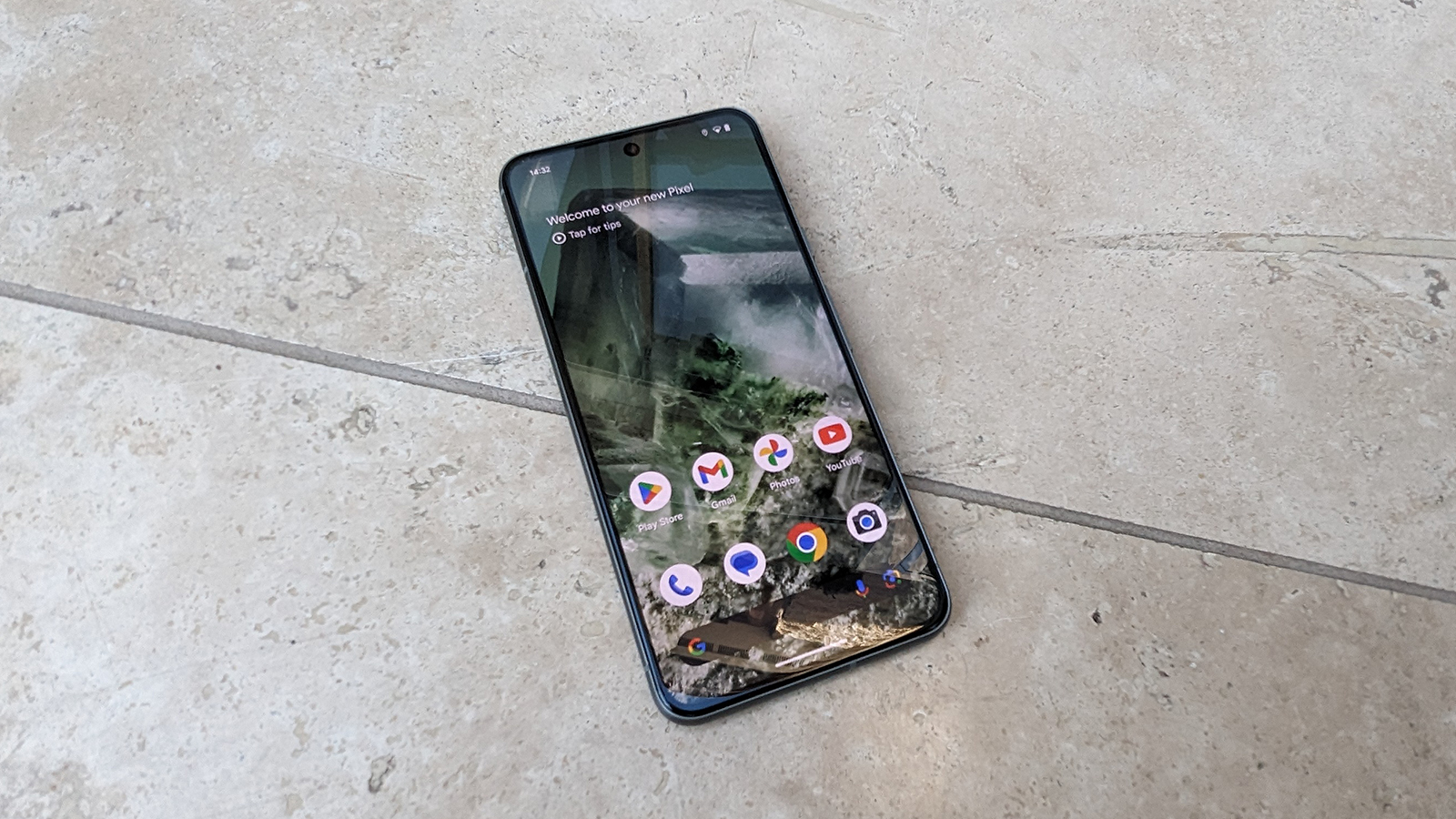
The Google Pixel 8 is a pleasure to use: it's speedy, it's clever, it takes great photos, and it has some cool AI tricks – what more do you really want from a smartphone? I wouldn't have any qualms about using it as my day-to-day phone – even though it's significantly smaller in terms of display size than the Google Pixel 8 Pro, which is closer to what I'm used to using.
Overall, the Pixel 8's distinctive design is something I appreciate, although it isn't going to impress everyone, while the colour options are a bit underwhelming. But in my eyes this is a good-looking, well-made handset, and one that you can rely on for years to come thanks to the promise of years of updates and feature drops.
That said, it feels – as it has done for the last few Pixels – that Google isn't quite getting full marks in every single category. With just a bit more work in certain areas (like raw performance and battery life, for instance), this could really be a flawless phone. Right now though, it's a four-out-of-five type deal, rather than a five-out-of-five stunner.
Also consider
We've already spoken about the Pixel 8 Pro as an alternative, but on the Android side, there's also the Nothing Phone (2) or Samsung Galaxy S23. The former is similar in pricing and adds its own take of design, while with the Galaxy S24 models not too far off, you should be able to get some significant discounts on the price of the Samsung flagship in the near future.
There's always the iPhone 15 or 15 Pro, of course, if you want to make the jump to iOS – though by now you've probably made your choice and are sticking with it. It's more expensive than the Pixel 8, and while it's slicker and snappier in performance, the camera capabilities are arguably not quite as good as on Google's handset.
Sign up to the T3 newsletter for smarter living straight to your inbox
Get all the latest news, reviews, deals and buying guides on gorgeous tech, home and active products from the T3 experts
Dave has over 20 years' experience in the tech journalism industry, covering hardware and software across mobile, computing, smart home, home entertainment, wearables, gaming and the web – you can find his writing online, in print, and even in the occasional scientific paper, across major tech titles like T3, TechRadar, Gizmodo and Wired. Outside of work, he enjoys long walks in the countryside, skiing down mountains, watching football matches (as long as his team is winning) and keeping up with the latest movies.
-
 Warning: Ciele’s refreshed Elite Collection may cause excessive garment envy on race day
Warning: Ciele’s refreshed Elite Collection may cause excessive garment envy on race dayFlex on your run crew with Ciele’s latest drop
By Matt Kollat Published
-
 Smeg adds a touch of navy sophistication to its iconic breakfast set
Smeg adds a touch of navy sophistication to its iconic breakfast setIt's a minimalist's dream
By Lizzie Wilmot Published
-
 My most anticipated Netflix movie of the year gets a wild new trailer
My most anticipated Netflix movie of the year gets a wild new trailerHavoc looks pretty unbelievable
By Max Freeman-Mills Published